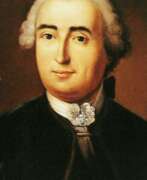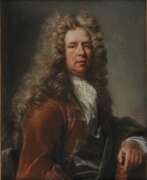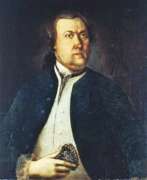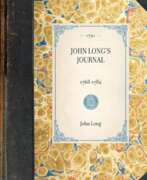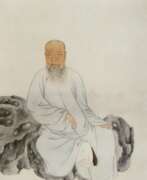Researchers 18th century


Ivan Akimovich Akimov (Russian: Иван Акимович Акимов) was a Russian painter celebrated for his contributions to the Classical and Neoclassical styles of art. Born into a family of a typographer for the Governing Senate, Akimov's journey into the arts began early when, after his father's death, he penned a heartfelt letter to the Imperial Academy of Arts. This letter secured his admission, marking the start of his lifelong association with the Academy, where he evolved from a student to its director.
Akimov's education at the Academy was marked by numerous awards, including gold medals for his artworks, showcasing his burgeoning talent in painting. His artistic journey took him to Italy on a fellowship, where, despite initial challenges, he found mentorship under Pompeo Battoni and was inspired by the Venetian masters. This period was instrumental in shaping his skills and artistic outlook.
Throughout his career, Akimov was revered not just for his artistic output but also for his contributions to art education and historiography in Russia. He played a pivotal role at the St. Petersburg Academy of Arts, ultimately serving as its director. Akimov's legacy extends beyond his paintings, through his influence on future generations of artists and his foundational work in Russian art historiography. Among his notable works are "Prometheus Making a Statue at the Command of Minerva" and "The Baptism of Princess Olga in Constantinople", which reflect his classical influences and historical interests.
For those interested in exploring Ivan Akimovich Akimov's works and legacy, signing up for updates on new product sales and auction events related to Akimov could provide valuable insights and opportunities to connect with his art. This subscription ensures you stay informed about the latest discoveries and offerings in the world of Russian classical painting.
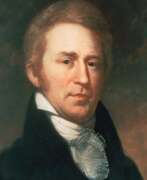

William Clark, an American frontiersman, is best known for co-leading the epic Lewis and Clark Expedition alongside Meriwether Lewis from 1804 to 1806. This journey was a monumental exploration of the American West, extending to the Pacific Northwest, which laid the foundation for westward expansion and significantly contributed to the nation's knowledge of the vast territory.
Before his fame as an explorer, William Clark had a substantial military career, beginning with his service in the militia and the U.S. Army during the Northwest Indian War. His experiences in the military, including participation in the Battle of Fallen Timbers, honed his leadership and survival skills, which were crucial for the success of the Lewis and Clark Expedition.
Following the expedition, William Clark continued to serve in significant roles, including as the governor of Missouri Territory and as a superintendent of Indian Affairs. His later years were dedicated to managing relations with various Native American tribes, navigating the complexities of the expanding American frontier.
For collectors and experts in art, history, and antiques, William Clark's life and contributions offer a fascinating lens through which to explore the early 19th-century American narrative. His maps, journals, and other related artifacts provide a unique perspective on this formative period in U.S. history.
To stay informed about new discoveries, exhibitions, and auction events related to William Clark, consider subscribing for updates. This subscription will provide you with valuable insights into the lasting impact of Clark's legacy on American culture and history.


Meriwether Lewis was an American explorer renowned for leading the Lewis and Clark Expedition with William Clark from 1804 to 1806. This historic journey, commissioned by President Thomas Jefferson following the Louisiana Purchase, aimed to map the newly acquired territory, establish trade with and assert sovereignty over the native tribes, and find a water route to the Pacific Ocean. The expedition significantly contributed to the American understanding of the vast western territories and its diverse natural resources, flora, fauna, and indigenous cultures.
After the expedition, Lewis was appointed as the governor of the Louisiana Territory, where his administration was met with mixed reviews. He faced numerous challenges, including political disputes and financial troubles. Lewis's life came to a tragic end in 1809 under mysterious circumstances at Grinder's Inn, Tennessee, where he died from gunshot wounds in what is widely believed to be a case of suicide, though some debate around the circumstances persists.
For collectors and enthusiasts in art and antiques, the story of Meriwether Lewis provides a fascinating insight into early American exploration and the historical context that influenced American art and culture during the early 19th century. His legacy, immortalized through various portraits and memorials, continues to be a subject of interest and admiration.
To stay updated on information and events related to Meriwether Lewis and related historical figures, consider subscribing for updates. This subscription will keep you informed about new discoveries, exhibitions, and auction events, enriching your understanding of America's early exploration history.
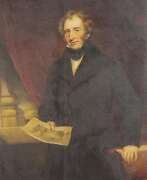

Isaac Weld was an Irish explorer, writer, and artist.
After completing his studies, Isaac Weld traveled to the new lands of America in 1795, meeting Thomas Jefferson and George Washington. The purpose of his journey was to learn of opportunities for Irish resettlement. Returning in 1797, Weld soon published his book, A Journey through the States of North America and the Provinces of Upper and Lower Canada. In general, Weld did not like the United States; he particularly noted the practice of slavery and the treatment of Native peoples by the rude new Americans. But he liked Canada and Quebec: he praised the views from the Citadel and reported that because of the low cost of land, a middle-income person could easily settle in the country for himself and his family.
This book by Weld was quite popular: it went through several editions from its first publication in 1799 to 1807. By 1820, it had also been translated into French, German, Italian, and Dutch.
In 1800 Weld was elected a member of the Royal Society of Dublin. In 1811 and 1812 he served on the library committee, and on December 4, 1828, he was elected honorary secretary. His first act in this capacity was to establish an annual exhibition of specimens of the manufactures and products of Ireland. Isaac Weld published several other books on Ireland and Great Britain, illustrated with his own drawings. Of these, his Statistical Survey of the County of Roscommon, over seven hundred pages long, published by the Royal Dublin Society in 1832, stands out.




